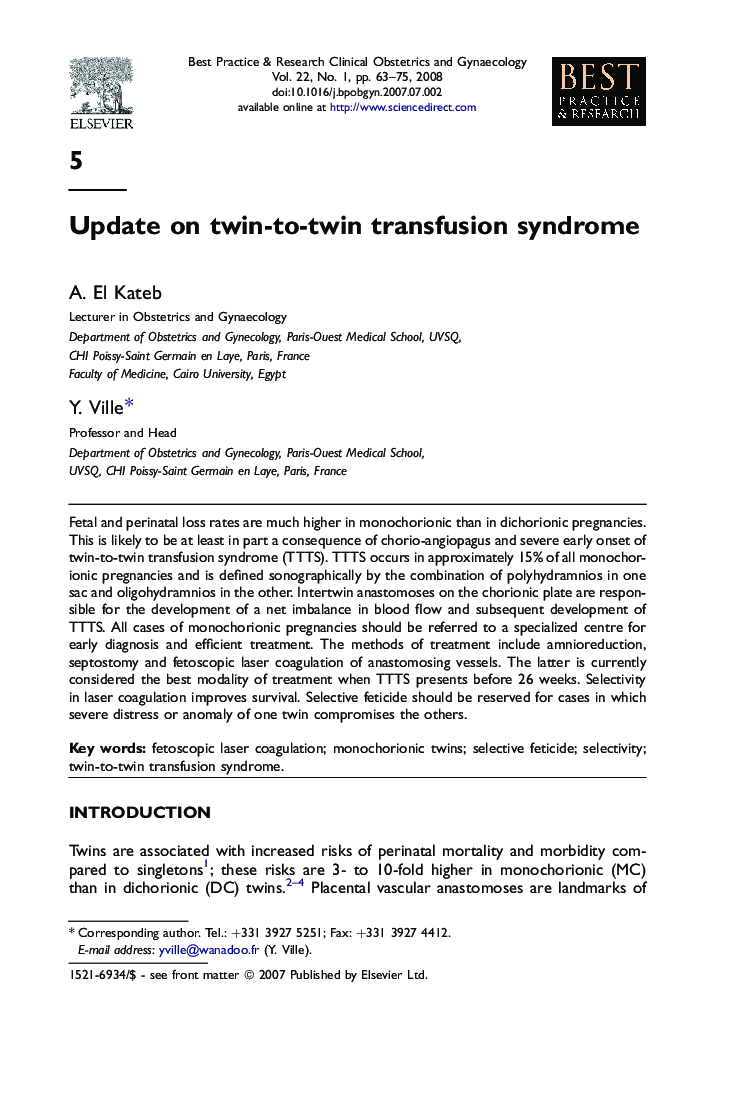| Article ID | Journal | Published Year | Pages | File Type |
|---|---|---|---|---|
| 3908011 | Best Practice & Research Clinical Obstetrics & Gynaecology | 2008 | 13 Pages |
Fetal and perinatal loss rates are much higher in monochorionic than in dichorionic pregnancies. This is likely to be at least in part a consequence of chorio-angiopagus and severe early onset of twin-to-twin transfusion syndrome (TTTS). TTTS occurs in approximately 15% of all monochorionic pregnancies and is defined sonographically by the combination of polyhydramnios in one sac and oligohydramnios in the other. Intertwin anastomoses on the chorionic plate are responsible for the development of a net imbalance in blood flow and subsequent development of TTTS. All cases of monochorionic pregnancies should be referred to a specialized centre for early diagnosis and efficient treatment. The methods of treatment include amnioreduction, septostomy and fetoscopic laser coagulation of anastomosing vessels. The latter is currently considered the best modality of treatment when TTTS presents before 26 weeks. Selectivity in laser coagulation improves survival. Selective feticide should be reserved for cases in which severe distress or anomaly of one twin compromises the others.
